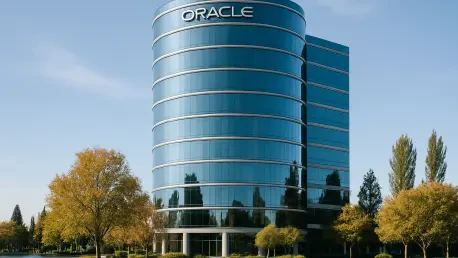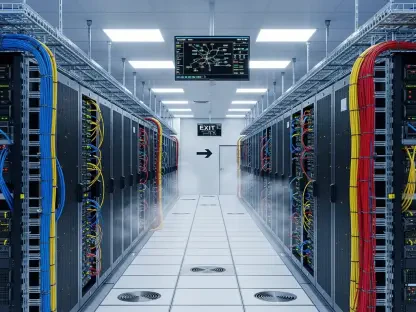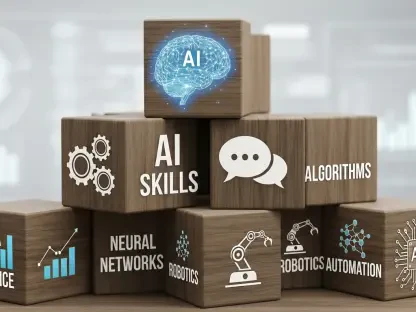In a striking reflection of the tech industry’s ongoing turbulence, Seattle, long considered a hub for innovation and growth, is witnessing significant workforce reductions by major players like Oracle, a cloud computing giant that recently announced the layoff of 101 employees in the city. This follows an earlier cut of 161 workers just months prior, shrinking a once-robust local staff that numbered nearly 3,900. This move is not an isolated incident but part of a broader wave of downsizing across the sector, with companies like Microsoft, Amazon, and T-Mobile also trimming jobs in the region. Beyond technology, even corporate giants such as Starbucks have joined the trend, shedding over 1,000 positions earlier this year. These developments raise pressing questions about the forces driving such widespread layoffs and what they signify for the future of work in tech-centric cities like Seattle. As the industry grapples with shifting priorities, the impact on local economies and employees becomes a critical point of focus.
Industry-Wide Workforce Reductions
Tech Giants Scaling Back Operations
The tech sector’s current landscape reveals a pattern of substantial job cuts, with Seattle bearing a significant brunt of the impact. Oracle’s reduction of 262 jobs over a short span underscores a strategic pivot that mirrors actions by other industry leaders in the area. Microsoft, for instance, has laid off over 15,000 employees globally, while Amazon has scaled back hundreds of roles within its cloud division. T-Mobile and F5, both key players in the region, have similarly reduced their workforces. This collective downsizing points to a recalibration of resources amid changing market dynamics. While economic downturns often play a role in such decisions, the narrative from many firms emphasizes a deliberate focus on streamlining operations to remain competitive. For Seattle, a city heavily reliant on tech employment, these cuts signal potential challenges to economic stability, prompting concerns about the ripple effects on local businesses and communities dependent on tech workers’ spending.
Beyond Tech: A Broader Corporate Trend
While the tech industry garners much attention for its layoffs, the phenomenon extends beyond this sector, affecting a wider range of corporate entities in Seattle. Starbucks, a prominent name headquartered in the city, announced over 1,000 job cuts in February as part of a larger effort to restructure its corporate framework. This move reflects a shared theme of efficiency-driven downsizing seen across industries, where companies aim to optimize their operations in response to evolving market demands. Unlike tech firms, where innovation often drives change, other sectors appear to be reacting to cost pressures and the need for leaner structures. The convergence of these trends in Seattle paints a picture of a regional economy under strain, where job security is increasingly uncertain. As firms across different fields adopt similar strategies, the broader implications for workforce morale and consumer confidence in the area become a growing concern, highlighting the interconnected nature of corporate decisions and local livelihoods.
Strategic Shifts and Emerging Priorities
The Role of AI in Workforce Realignment
A significant factor influencing layoffs in the tech industry, including Oracle’s recent cuts in Seattle, is the rapid advancement and integration of artificial intelligence (AI). While most companies shy away from directly linking job reductions to AI replacing human roles, there is a clear trend of reallocating resources toward this transformative technology. Salesforce stands out as an exception, openly acknowledging that AI adoption led to the replacement of 4,000 customer service positions, including 93 in Seattle. For others like Oracle, the connection remains implicit, with public statements focusing on efficiency and innovation rather than automation. This shift suggests a nuanced reality where AI may not always be the direct cause of layoffs but often serves as a catalyst for eliminating redundant roles. The emphasis on funding AI development signals a long-term bet on technology as a driver of growth, even at the expense of current workforce numbers, raising questions about how employees can adapt to these evolving demands.
Reducing Physical Footprints in Seattle
Alongside workforce reductions, tech companies in Seattle are reevaluating their physical presence, with Oracle leading the way in scaling back office space. The company has vacated significant portions of its leased properties, including three floors in downtown Bellevue and nearly 100,000 square feet in Seattle’s Century Square tower. This mirrors a broader industry shift toward remote and hybrid work models, accelerated by the lasting impacts of the pandemic. Once a major employer in the region alongside Amazon and Microsoft, Oracle’s contraction reflects a reassessment of the need for large physical hubs. This trend is not unique to one firm; many tech giants are rethinking real estate investments as operational needs evolve. For Seattle, the reduction in office footprints could lead to decreased demand for commercial spaces, affecting property markets and local businesses that rely on office workers. The long-term implications of this shift suggest a fundamental change in how tech firms structure their operations, prioritizing flexibility over traditional office-centric models.
Reflecting on a Transformative Period
Lessons from a Year of Change
Looking back, the extensive layoffs by Oracle and other tech giants in Seattle marked a pivotal moment of transformation for the industry. The reduction of hundreds of jobs, coupled with the strategic retreat from physical office spaces, underscored a period of intense recalibration. Companies navigated a delicate balance between investing in cutting-edge technologies like AI and maintaining workforce stability, often prioritizing the former. This era of downsizing revealed the vulnerabilities of tech-dependent regions, where local economies felt the immediate impact of corporate decisions. Reflecting on these events, it becomes evident that adaptability was key for both firms and employees, as market demands shifted rapidly. The narrative of efficiency and innovation, while necessary for competitive survival, left many workers facing uncertainty, prompting a deeper examination of how such transitions could be managed with greater foresight and support for those affected.
Future Pathways for Tech Employment
As the dust settled on this wave of layoffs, attention turned to actionable steps for mitigating the impact and preparing for what lies ahead. For tech hubs like Seattle, fostering resilience involves collaboration between companies, local governments, and educational institutions to upskill workers for emerging fields like AI and cloud computing. Initiatives to support displaced employees through retraining programs and career transition services emerged as critical needs. Additionally, tech firms could explore more transparent communication about the motivations behind layoffs, helping to build trust with remaining staff and communities. Looking forward, the industry might consider hybrid models that balance technological investment with human capital, ensuring that innovation does not come at the expense of livelihoods. By prioritizing sustainable growth strategies, there is an opportunity to rebuild confidence in tech as a stable employer, while equipping the workforce with tools to thrive in a rapidly evolving landscape.









